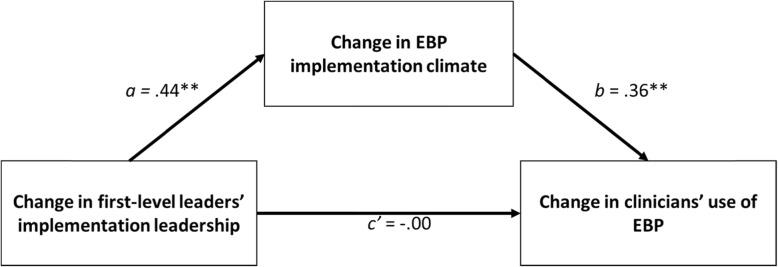Fig. 1.
Study theoretical model. Hypothesis 1 states that within-organization increases in first-level leaders’ use of implementation leadership behavior will improve the EBP implementation climate within their organization (path a). Hypothesis 2 states that within-organization increases in EBP implementation climate will contribute to increases in clinicians’ use of EBP, controlling for implementation leadership (path b). Hypothesis 4 states that within-organization increases in implementation leadership will indirectly improve clinicians’ EBP use via within-organization improvement in EBP implementation climate (path a × path b). Path coefficients are estimated using econometric two-way fixed effects regression models at the organization level; they represent the relationships between within-organization change in the antecedent and within-organization change in the consequent, controlling for all stable organizational characteristics, population trends in the consequents over time, and time-varying covariates of molar organizational climate, transformational leadership, and workforce composition (see Table 3, k = 73, N = 30)

